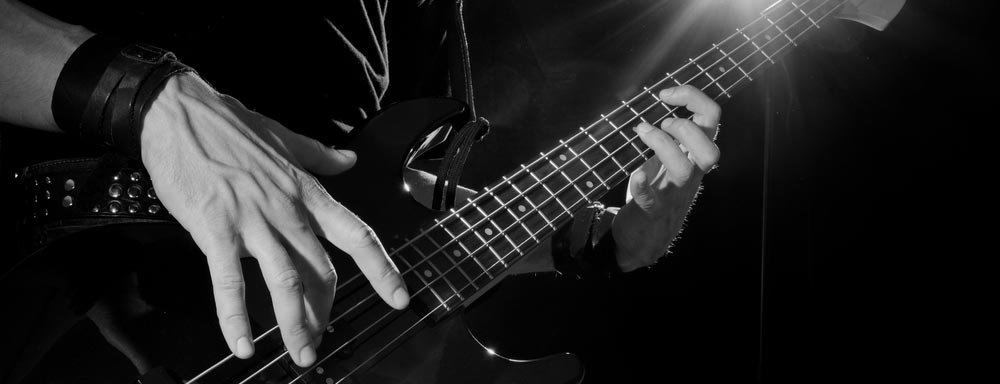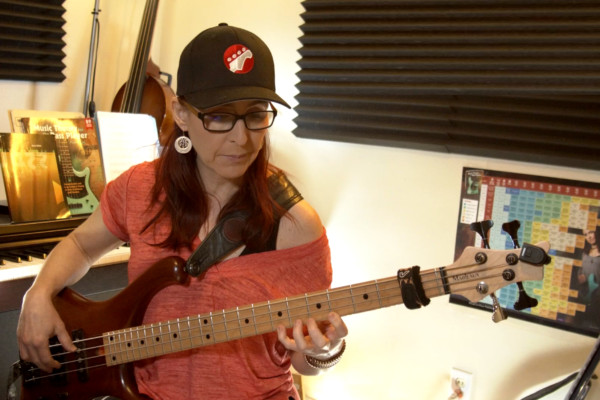The Lightbulb Moment: Time Games

Game #1: The Record Release Show
Round 1—Rehearsal Time
There’s something invigorating about working with a new artist, especially when they’re releasing a record and learning how to adapt their songs to a live show. The drummer counts of the first tune and by the end of the chorus, the vocalist stops the band.
“Hey guys, it feels a little slow. Can we play it faster?”
If I had a dollar for every time that happened…
The drummer got the tempo from the record, and while it seemed perfectly comfortable to listen to, the overall feel was a bit too lackluster when it was time to translate the song to the stage. Take it up a few BPM. Ahhh. That’s better!
Two hours later and roughly half of the tunes have gone from the record tempo to what has been deemed a more upbeat and appropriate “live tempo.” The new tempos range from two to six BPM faster, just enough to subtly change the energy of the song without drastically impacting the feel or groove.
Round 2—Show Time
Three days later and we’ve just taken the stage. The drummer counts off the first tune and we’re all in at the top. Success! The crowd digs it. Three songs in and it’s time for the guitar player to start a tune. As the drummer is about to give a tempo, the guitarist just starts playing. Wow. That’s fast. Someone has got their adrenaline running at full speed. A song that was comfortable at 100 BPM, which we decided to bump up to 102 in rehearsal, is now sitting somewhere around 112. This’ll be fun.
Three minutes later and we play the final note of the song. Everyone looks around the bandstand and laughs and when singer turns around and says, “phew, made it through that one!” Aside from stumbling on a few lyrics and just barely missing the quick riff in the bridge, we all ended together.
The joys of playing live!
Game #2: The Cover Gig
Round 1—Kick it off!
“One, Two, Three, Four!” It’s party time. We kick into a Stevie Wonder medley, breezing through “Sign, Sealed, Delivered” and “Superstition.” And, just my luck, we jump in to “Sir Duke.” Given the nature of the event… a lively Saturday evening affair attended by many well-dressed and ready-to-get-down middle-aged couples, it’s only natural that we pick up the tempo for most of the songs. This is all well and good until Sir Duke turns into an exercise of “I didn’t think I could ever play that lick that fast.” It’s a good thing that I warmed up before the gig.
As we’re playing the song, I can’t help but notice that some dancers aren’t totally digging the groove. Sure, there are still plenty of people on the dance floor and we made the song work within the medley, but I have the strangest feeling that we’re losing a few folks. Maybe faster isn’t always better, especially when it comes to Stevie Wonder. Oh well, on to the next tune.
Round 2—Take It Down A Notch
There comes a time in every party where people need to take a break—the dancers, of course, but the band as well. After all, you can’t play fast all the time. Here comes the mellow rendition of Prince’s “1999.” The song has magically transformed into a beautiful ballad with plenty of space, driving the listener’s attention to the lyrics and allowing the band to chill while the song is carried by acoustic guitar and keys. What a brilliant adaptation. It’s refreshing to hear a classic song re-imagined, especially when this new interpretation is equally, if not more, impactful to the listener.
Wrap Up
These are just a few instances (or “lightbulb moments”) of musical time games that we instrumentalists need to be prepared for. Sometimes, we unexpectedly have to play something at lightning speed because that’s how the song is kicked off. In those situations, you’ll be glad that you’ve been hitting the woodshed and working on technique. Other times, we get to relax and come up with a slow-jam groove to a tune that is typically more upbeat. Artists, bandleaders, and circumstances will dictate how to interpret the tempo of a song and whether it’s best to adhere to the record tempo, bump it up a few clicks, or drastically change the feel. Some adaptations are successful, others less so.
One of the most exciting aspects about playing live is that you really don’t know how things are going to pan out until you’ve finished playing the song. The key is keeping your mind on the music while being mentally and physically flexible. And who knows, you might end up playing a really funky and musically liberating version of a tune that seems even better than the original. And, sometimes you’ll push yourself to the limits of your technical ability and surprisingly make it through the tune just fine.
All in all, that sounds like a game that I’m willing to play.
Ryan Madora is a professional bass player, author, and educator living in Nashville, TN. In addition to touring and session work, she teaches private lessons and masterclasses to students of all levels. Visit her website to learn more!



